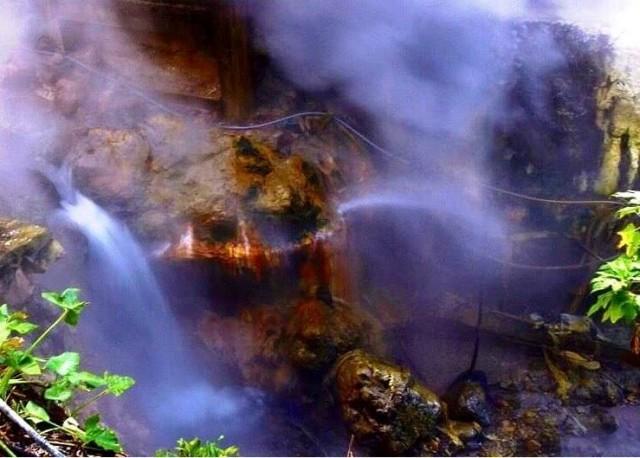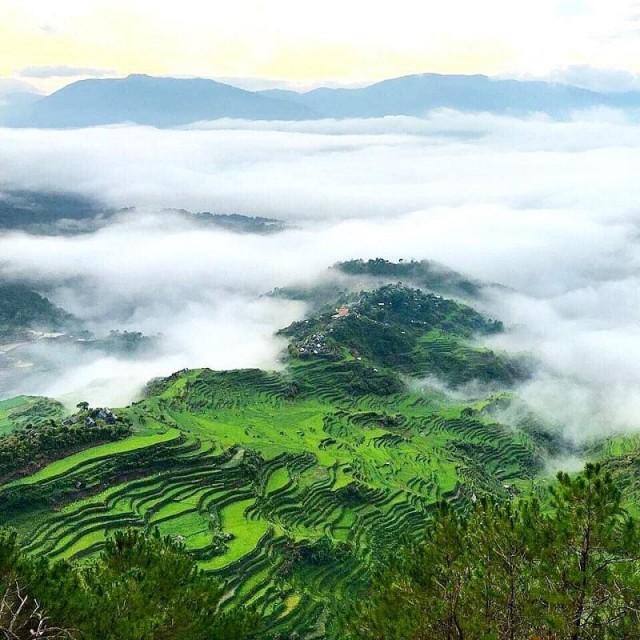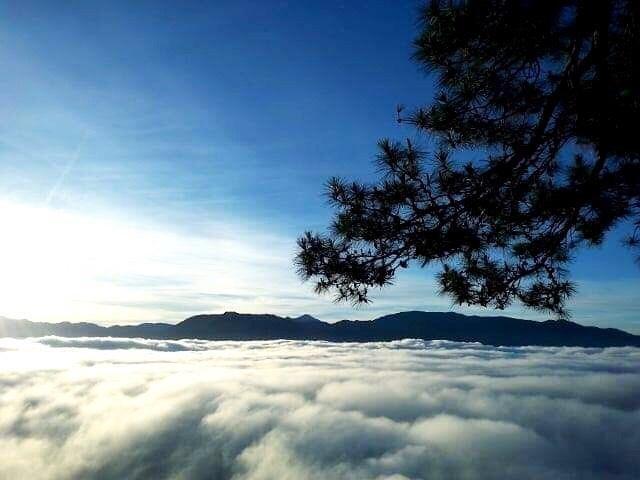Searching for hidden treasure in the magical place of Bontoc
It is said that there is treasure hidden within the centuries-old rice terraces in Bontoc, Mountain Province.
What it is, or where it's hidden is a mystery tackled by the Kapuso Mo Jessica Soho team in its latest episode.
Maligcong Rice Terraces

In the search for the hidden treasure, one may come across the largest rice terraces in Bontoc, the Maligcong Rice Terraces. It is listed under the UNESCO World Heritage.
Thought to be about 2000 years old by now, the Maligcong Rice Terraces is made of stones, making it more stable than the Banaue Rice Terraces.
And at the middle of it lies the Favarey Village.
The beauty of the Maligcong Rice Terraces peaks in June. And as if it is not amazing enough, it is also a great spot to view Mt. Kupapey.
The Maligcong Rice Terraces is just one of the six rice terraces in Bontoc.
The rest are thought to be 300 to 400 years old.
Barangay Mainit
Like its name suggests, this secluded town comes across as magical because of the smoke steaming from the ground.
The heat is due to the boiling hot water running through the canals — some residents even boil eggs in this very water.

Residents say that the hot springs have been there even before they started erecting houses in the area. They even used to believe they were situated atop an active volcano.
But according to Benigno Espejo of Mines and Geosciences Bureau, Mainit is, in fact, situated on top of a dormant volcano called Mount Patoc.
This could be the reason for the high copper sulfate in the soil.
But as amazing as it may seem, it has become a struggle for residents to go around it. The water used to only sprout out from the ground in one area far from the houses, but that is no longer the case. Some have been burned and injured because of the naturally heated water.
As a way to make use of it, the community has set up pools that they can enjoy.
Women have separate pools from men, but they all take a dip in the nude — a habit passed down from their ancestors and by now is ingrained in their culture.
As for why the water runs hot — no, they are not standing on an active volcano. The heat is due to the high copper sulfate in the ground.
While the town is a gem, the hidden treasure cannot be found here, but rather at the top of Mt. Data in Barangay Alab Oriente.
Mt. Data

It's a three-hour trek from the center of the barangay.
Before the climb starts, elders pray over a pot of rice in their local language. They and the visitors drink rice wine as a tribute to the spirits so that the climb will be safe.
One of the challenging parts about the climb is the "Thousand Steps" before reaching the summit.
The trek only becomes harder and harder, but climbers are treated to a view of the Palali Rice Terraces and the Chico River. Locals believed that this was where the civilization of Cordillera started.
After a grueling three hours, the treasure was found.
Binutbuto
At the summit of Mt. Data, there is a large rock called the Binutbuto.
It is not the rock that's special, but what is carved into it: Alab Petroglyphs.

There are only two confirmed petroglyphs site in the Philippines — the places that show how the ancestors wrote in their time.
One is the Angono Petroglyphs that is estimated to have started 2,000 BC and the Alab Petroglyphs which is thought to have started 1500 BC.
The other petroglyphs site is in Rizal.
Due to the priceless discovery in Bontoc, the National Cultural Treasure has declared it as our people's treasure.
While no one can really interpret the writings on the stone, it is thought to show the genitals of men and women.
Anthropologist Prof. Nestor Castro says if this is correct, there is no malice in it.
In Cordillera culture, it is normal for them to incorporate genitals in their artwork. Case in point: the barrel man and other familiar souvenirs from the North.
The bones of the ancestors who made the petroglyphs are located thirty minutes from Binutbuto at the Ganga Burial Caves.
Ganga Burial Caves
Inside the three caves are 51 coffins made of pinewood, called "along," where the ancestors were buried. They are estimated to have been there for 3,000 years.
These are shut using a piece of wood called the palok, although not all of them had lids anymore.
Castro said that the ancestors buried there may be from the same group as the ones buried in Sagada's hanging coffins because they had similar designs.
He added that Mt. Data is the focus of anthropological studies in Cordillera because it is said to be the "birthplace" of many ethnolinguistic groups, such as the Kankana-ey, Ibaloi, and Bontok.
This means that this area in Bontoc had been one of the first settlements of the people in Cordillera.
This goes to show that not all treasure glitters, but its value in our history and culture is worth more than gold. — LA, GMA News




